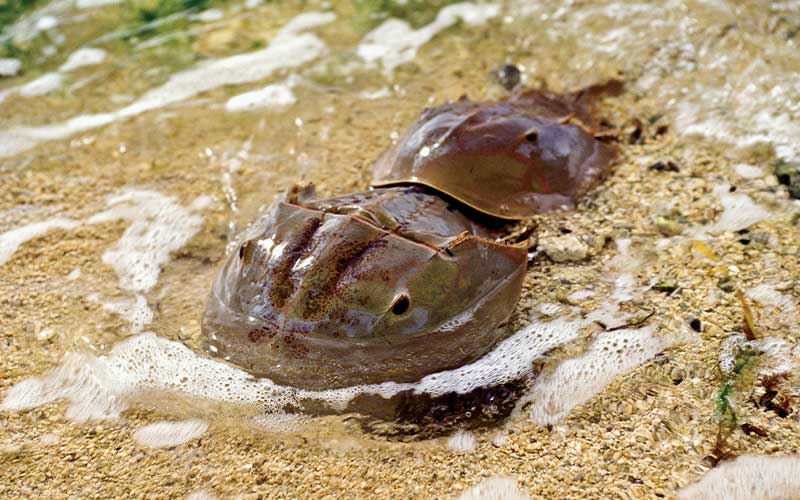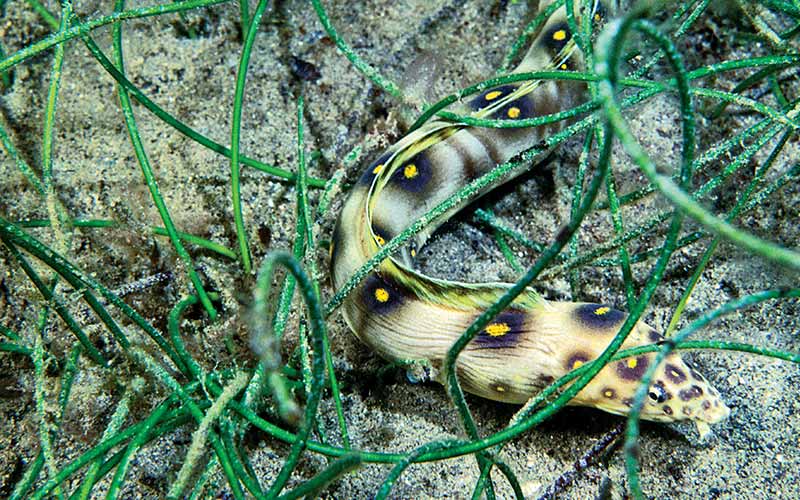If there was a hand signal for “Oh no, not again,” my dive buddies would flash it whenever I detour off the reef and swim out over the seagrass. Sure, these little side expeditions can sometimes be a bust, but I’ve found nurse sharks, stingrays, eels and, more often than you’d guess, seahorses. Even dolphins can be found cruising the seagrass beds.
That kind of payoff shouldn’t be a surprise if you consider that an acre of seagrass can support 40,000 fish and 50 million small invertebrates. Seagrasses are the vast nursery and feeding grounds of the reefs we love. Trouble is, seagrass is in trouble.

A National Academy of Sciences study published in July 2009 reports that since 1879 almost 20,000 square miles of seagrass have disappeared, a 29 percent loss worldwide. Even more disconcerting, the study says the rate of loss is accelerating. The 5 million acres that used to grow in Florida is down to 2.7 million, a huge loss when you consider the Florida Department of Environmental Protection pegs the value of each acre at $20,500 per year.

Can the trend be reversed? In some areas, yes. Sean Meehan, a biologist at the National Marine Fisheries Restoration Center, points to Tampa Bay, which lost 81 percent of its seagrass during the last 60 years due to poor water quality. Tertiary treatment of sewage outfalls, which began in the bay about 20 years ago, has improved water quality dramatically, resulting in the regrowth of more than 6,000 acres of seagrass. The success in Tampa Bay is part of the motivation for the huge Florida Keys sewage treatment initiative, now in progress.
Another significant source of damage to seagrass is “prop scarring,” caused by careless boaters cleaving through seagrass beds. An estimated 174,000 acres in Florida have been damaged by what biologist Kevin Kirsch, also with Restoration Center, calls the “death of a thousand cuts.”
The Ocean Foundation, a nonprofit group based in Washington, D.C., recently proposed a mitigation program called the Aquatic Resource Fund. Under the program, developers destroying seagrass during construction projects permitted by the U.S. Army Corps of Engineers could pay a mitigation fee, which the foundation would use to restore prop-scarred seagrass beds.
Ocean Foundation president Mark Spalding says the concept originated with a privately funded project to repair about a tenth of an acre of prop scarring in the Florida Keys. With a minimum of 50 acres per year projected to be lost due to permitted construction, the Aquatic Resource Fund program will have to ramp up that effort significantly.

Other environmental groups object to the proposal, citing the poor history of mitigation. Robin Lewis, president of the Coastal Resources Group, says the plan could expedite permits allowing destruction of seagrass in one location, while relying on contractors with unregulated qualifications and methods to regrow it in another. “The program should also provide funding for increased marking and protection; otherwise the repaired areas are going to be damaged again and again,” Lewis says.
© Alert Diver — Spring Q2 2010